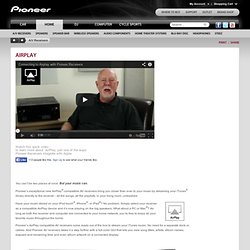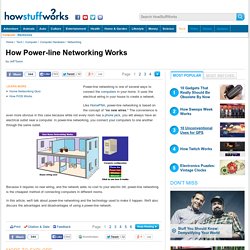

Philips In.Sight Wireless Home Monitor. Don't pay RRP of $179.95 This thingy was sold on Tuesday, 28 May, 2013 and is no longer able to be purchased This thingy is sold out and no longer available.

Sorry if you missed out! The ultimate in WiFi video monitoring - Watch over your home while you are away Instant monitoring from your iPhone, iPad or Android phone with encypted direct monitoring Wi-Fi enabled for placement anywhere in your home or office Watch up to 16 monitors with one app to provide complete piece of mind Built-in noise and motion detection that automatically uploads to your private dropbox account. PIONEER XW-SMA4-K Wi-Fi (R) AirPlay (R) Speaker System with 5 Driver Design. XW-SMA4-K Specs, Reviews, & Latest News. Airplay. Watch this quick video to learn more about AirPlay, just one of the ways Pioneer Receivers integrate with Apple.

You can’t be two places at once. But your music can. Pioneer’s exceptional new AirPlay®-compatible AV receivers bring you closer than ever to your music by streaming your iTunes® library directly to the receiver - all the songs, all the playlists, in your living room, unleashed. Have your music stored on your iPod touch®, iPhone®, or iPad®? No problem. Pioneer’s AirPlay compatible AV receivers come ready out of the box to stream your iTunes music. What is AirPlay. Showing home » Smart Energy Groups. Install * Monitor and Reduce your Energy * Save. Energised Homes. CCI - Power-Mate. Surfcoast Electrical, Voice & Data P/L - Electricians with a wide range of services. Clever Home Automation Website - Professional Home Automation: Australia, Victoria, Melbourne; Clipsal C-Bus.
Wiser Home Automation - Clipsal C-Bus Wiser Home Controller. iPhone, iPad, iPod app. X10 home automation. Standby Power : FAQs. What exactly is standby power and why is it necessary?

Most experts agree that standby power is electricity used by appliances and equipment while they are switched off or not performing their primary function. That power is consumed by power supplies (the black cubes—sometimes called "vampires"—converting AC into DC), the circuits and sensors needed to receive a remote signal, soft keypads and displays including miscellaneous LED status lights. Standby power use is also caused by circuits that continue to be energized even when the device is "off". That definition is attractive to a lay person but inadequate for technical purposes. An international technical standards committee is developing a definition and test procedure.
How can I identify products that draw standby power? Almost any product with an external power supply, remote control, continuous display (including an LED), or charges batteries will draw power continuously. How much standby does my TV, microwave, etc. use? Sometimes. Standby power. In the past, standby power was largely a non-issue for users, electricity providers, manufacturers, and government regulators.

In the first decade of the twenty-first century, awareness of the issue grew and it became an important consideration for all parties. Up to the middle of the decade, standby power was often several watts or even tens of watts per appliance. By 2010, regulations were in place in most developed countries restricting standby power of devices sold to one watt (and half that from 2013). How much electricity does it use? This page contains some notes and measurements on electricity consumption of various household items.

I had to work out the cost of running a server for a year and was surprised at how many units of electricity were used, so I decided to start recording other household items. The items I've listed here are things which are typically left plugged in (on standby). How much does it cost? Electricity consumption (at least in the UK) is measured and paid for by units, where one unit is the equivalent of 1 kilowatt hour. So a 100watt light bulb left on for ten hours uses 1unit of electricity (100watts x 10hours = 1000 watt hours = 1kwh) as would a 2kw fan heater left on for half an hour. The following table is provided as a guide and shows how many units (kwh) devices would use according to their rated power consumption: So a 100 watt bulb left on 24 hours a day for a year will use 876 units of electricity, which at (say) 15p per unit would work out at £131.40.
How Power-line Networking Works" Power-line networking is one of several ways to connect the computers in your home.

It uses the electrical wiring in your house to create a network. Like HomePNA, power-line networking is based on the concept of "no new wires. " The convenience is even more obvious in this case because while not every room has a phone jack, you will always have an electrical outlet near a computer. In power-line networking, you connect your computers to one another through the same outlet. Because it requires no new wiring, and the network adds no cost to your electric bill, power-line networking is the cheapest method of connecting computers in different rooms. In this article, we'll talk about power-line networking and the technology used to make it happen.